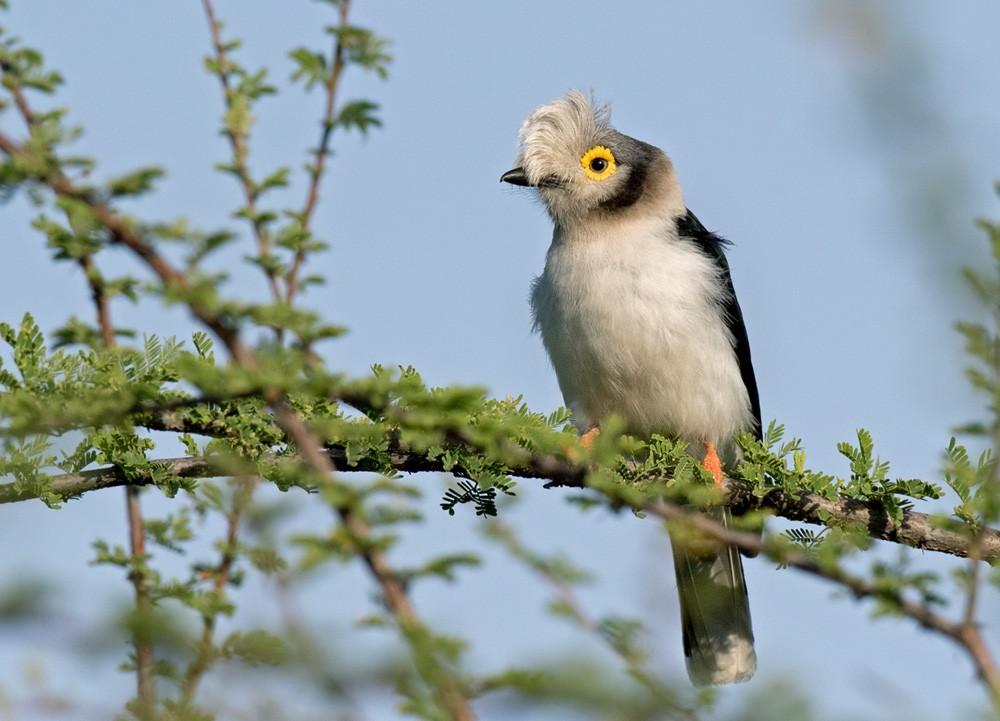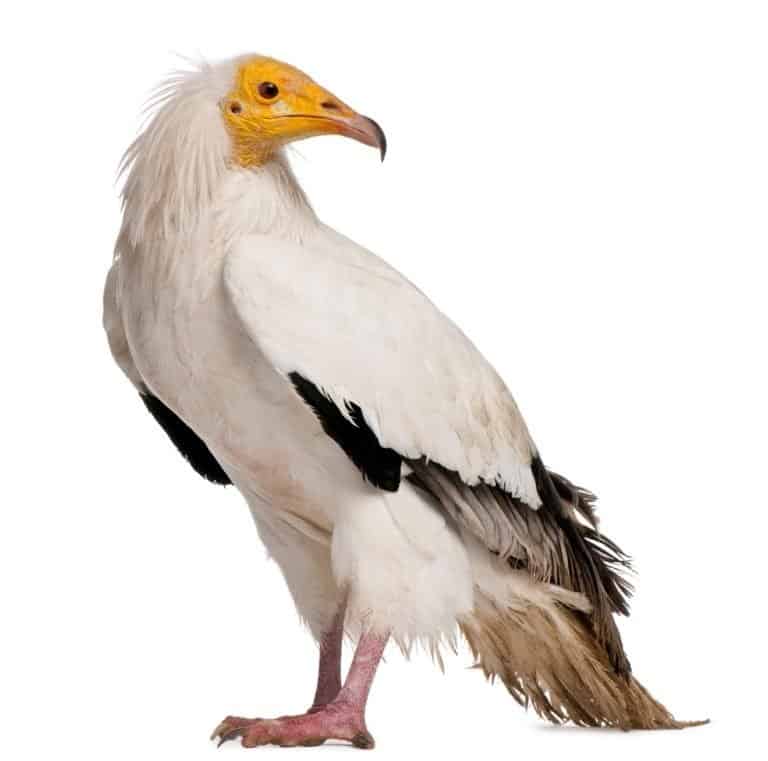A story in a Gujarati children’s fable speaks of how a koel and a parakeet were friends living on a huge banyan tree on the outskirts of a village. Both used to hang out, eat, sleep, and sing together. Once a hunter heard them singing and began flattering them to catch them. He told the birds that they were singing melodiously but as they were sitting too high, their songs were not audible to people on the ground. If they sat on a lower branch of a tree, villagers would hear their songs and appreciate them, he said.
Flattered, the parakeet told the koel that they should follow his advice and sit on a lower branch. The smart koel, however, understood the evil design of the hunter and refused to sit on a lower branch. But the parakeet did not pay heed to the koel’s warnings, flew to a lower branch, and started singing. Immediately, the hunter caught the parakeet. On a lighter note, this cautionary tale is probably why we find more parakeets in cages than koels.
The female koel is found almost everywhere and is known to outsource all its motherhood tasks – it even lays eggs in nests built by other birds.
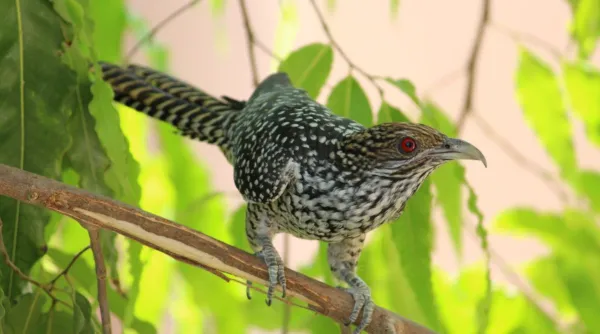 Asian female koel (Credit: Harsheev Trushit Naik)Bollywood director Rajkumar Hirani could be the first to feature the lesser-spotted female koel in his blockbuster ‘3 Idiots’ in the scene where Professor Viru Sahastrabuddhe (played by Boman Irani) comes with a nest of Asian koel on his bicycle to explain how competitive the world is. While I was watching the movie in a theatre, I heard people seated around me whispering, “Hey, is it really a cuckoo? Cuckoo must be black and this is brown with white spots!” This is because we think that both male and female Asian koels are monomorphic, meaning identical in appearance, shape, and coloration.
Asian female koel (Credit: Harsheev Trushit Naik)Bollywood director Rajkumar Hirani could be the first to feature the lesser-spotted female koel in his blockbuster ‘3 Idiots’ in the scene where Professor Viru Sahastrabuddhe (played by Boman Irani) comes with a nest of Asian koel on his bicycle to explain how competitive the world is. While I was watching the movie in a theatre, I heard people seated around me whispering, “Hey, is it really a cuckoo? Cuckoo must be black and this is brown with white spots!” This is because we think that both male and female Asian koels are monomorphic, meaning identical in appearance, shape, and coloration.
Like peacocks and peahens, male and female Asian koels are distinguishable by their appearance. But alas, unlike the national bird, there are no different names for a male koel and a female koel in our languages!
The male Asian koel has a shining black or glossy dark blue/purple colour. The female Asian koel has brown feathers with white dots on its upperpart, rufous forehead with white dots, rufous tail feathers towards the end with white dots, brown upperparts with white dots, and white underparts with brown stripes. Both the male and the female have blood-red eyes with a black iris. But the male’s eyes look redder because of the glossy black background of his feathers. Both sexes have greyish legs and a little hooked, greyish beak with a light greenish tint from the tip towards the gapeline. Their claws are greyish brown with thick raised horizontal lines across the claws. These birds do not live in pairs but form one during their breeding season.
Like many other species of birds, koels frequently bill-wipe. They do that to clean their beaks by rubbing them on a branch or any other surface from side to tip of the beak. You must have seen this behaviour in birds like crows, mynas, sunbirds, etc. It is difficult to find koels doing it because they keep themselves hidden in the canopy of tall trees. But if your home is on the third or fourth floor of a multistorey building, you can find koels under the canopy of a nearby tall tree.
Advertisement
Asian koel (Eudynamys scolopacea), which belongs to the cuckoo family of birds, is found almost everywhere in India. Out of almost 145 species of cuckoos, 12 to 13 species are found in Gujarat. Asian koel is the state bird of Jharkhand as well as the Union Territory of Puducherry.
Let’s remember here that keeping a parakeet or a koel as a pet is illegal.
Asian koels are shy yet smart birds because they perch on the top branches of a tall tree canopy to keep themselves safe from predators. We often hear the koel’s songs but don’t see the bird that often. But this is not the only smartness of the koel.
Unlike most bird species, koels do not labour to build their nests to lay eggs. Nor do they hatch eggs or labour to raise chicks. They outsource all these jobs. Their breeding season starts in summer. But the female lays her eggs in nests of other birds such as crows, mynas, starlings, etc. when they are not around. In this process of laying eggs, sometimes the female koel pushes some of the eggs of the host bird off the nest or even sometimes eats them. After laying eggs, the female koel leaves it to the host bird to hatch them. The latter generally fails to differentiate between its own eggs and that of the koel and thus obliges. This behaviour of laying eggs in the nests of other birds and abandoning them is known as brood parasitism.
Advertisement
But the ‘cheating’ does not end here. When eggs are hatched and hatchlings come out, the host again fails to recognise that some of the hatchlings are not its own. So, it feeds them like its own chicks. With time, the chicks grow and start looking like koels. Eventually, the host bird realises that some of the chicks are indeed not its own and abandons them. But by then, most of the koel chicks would have learned to fly and find food on their own.
The crow might be a smart bird but the koel is smarter. The Asian koel couple sits near the nest of a crow and the male tries to annoy the crow. The moment the crows leave their nest to chase the male koel away, the female koel seizes the opportunity and lays her eggs in the crow’s nest. Thus, the latter often gets the former to hatch her eggs and raise the chicks. By the time the poor crow couple realises that their labour of love has benefited someone else, the koel chicks get their wings and fly away. All this while, the koels would be making merry, sitting on branches of mango trees. Once the crows realise this, they abandon the chicks they had been rearing for weeks.
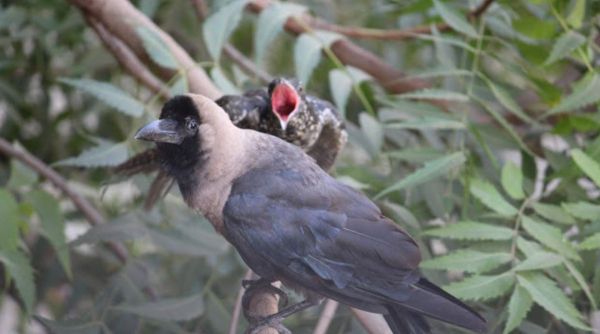 Asian koel chick being ignored by foster crow parent (Credit: Shefali Trushit Naik)In the Ambawadi area of Ahmedabad, there are many tall neem trees. By chance, I witnessed the behaviour of a crow abandoning the young ones of the koel and recorded it on my camera. The babies were making sharp sounds, like ‘chrrr chrrr chrrr….’, begging for food with their beaks open when they saw the crow coming towards them. But the crow neglected them and refused to feed them.
Asian koel chick being ignored by foster crow parent (Credit: Shefali Trushit Naik)In the Ambawadi area of Ahmedabad, there are many tall neem trees. By chance, I witnessed the behaviour of a crow abandoning the young ones of the koel and recorded it on my camera. The babies were making sharp sounds, like ‘chrrr chrrr chrrr….’, begging for food with their beaks open when they saw the crow coming towards them. But the crow neglected them and refused to feed them.
During the hot afternoons of summer, you can hear continuous songs of koels. The male, in his melodious voice, sings ‘koooo koooo…’ loudly and continuously to attract a female. The female responds with a ‘kwe kwe kwe…’ sound, rather unattractive to humans.
Advertisement
The Asian Koel is adored in Indian culture for its melodious calls and songs. They feature in many Bollywood songs and movies. Female singers with melodious voices are often given titles of ‘kokilkanthi’, meaning the one whose voice is as melodious as that of a koel. But ironically, only the male Asian Koel can make melodious calls and sing songs. More ironically, koel is a female noun in Gujarati and many other languages.
It is difficult to sight a female koel because of her feathers which camouflage her in tree canopies. But during summer, which is their breeding season, you may find a female koel flying or hopping from one tree to another, being chased by a male koel. When a female koel hops from one branch to another, it looks like a tiny dinosaur from the movie ‘Jurassic Park’. If you imitate a male’s ‘Kooooo… Kooooo…’, it will sing more loudly and with a higher tempo. Kids love to tease koels by imitating their calls.
Generally, the food of Asian koels is fruits of trees like neem, peepal, papaya, and berry. But it also eats insects and eggs of other birds. Koels do not search for food on the ground. Rarely, Asian koels can be seen sitting on the ground. During winter, they sit quietly in the canopy of trees for hours and sunbathe during the mornings. If you observe, you will hear the sound of koel chicks, mostly in the months of October and November. In some regions of India, people believe that the songs of a koel are a blessing from heaven.
 Male and female koels sunbathe during winter (Credit: Harsheev Trushit Naik)There is no threat to the Asian koel but it could be a threat to other birds as it lays eggs in their nests by destroying the hosts’ eggs or by harming their hatchlings. The next time you see a koel, I hope you will be able to identify its gender from how it looks.
Male and female koels sunbathe during winter (Credit: Harsheev Trushit Naik)There is no threat to the Asian koel but it could be a threat to other birds as it lays eggs in their nests by destroying the hosts’ eggs or by harming their hatchlings. The next time you see a koel, I hope you will be able to identify its gender from how it looks.
Advertisement
ALSO READ | Birds Without Borders | House sparrow, a bird associated with childhood memories
The International Union for Conservation of Nature (IUCN) red list of threatened species lists Asian koel or western koel as species of least concern.
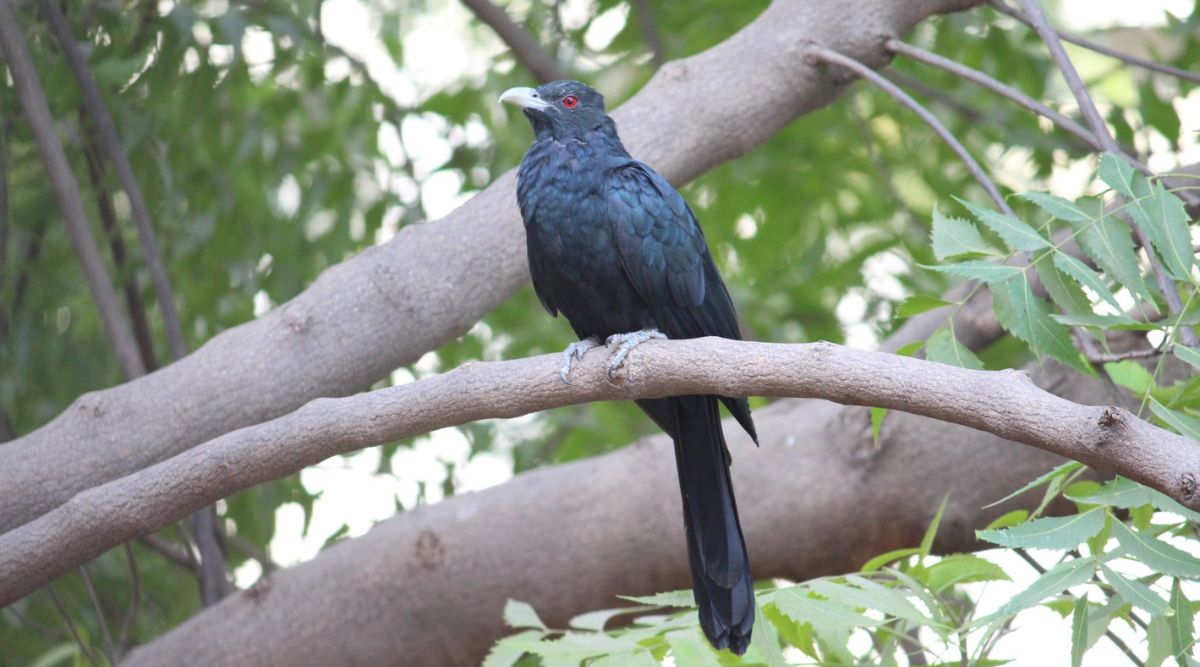
(Shefali Trushit Naik is an assistant professor at the School of Engineering and Applied Sciences, Ahmedabad University, and a birdwatcher)
